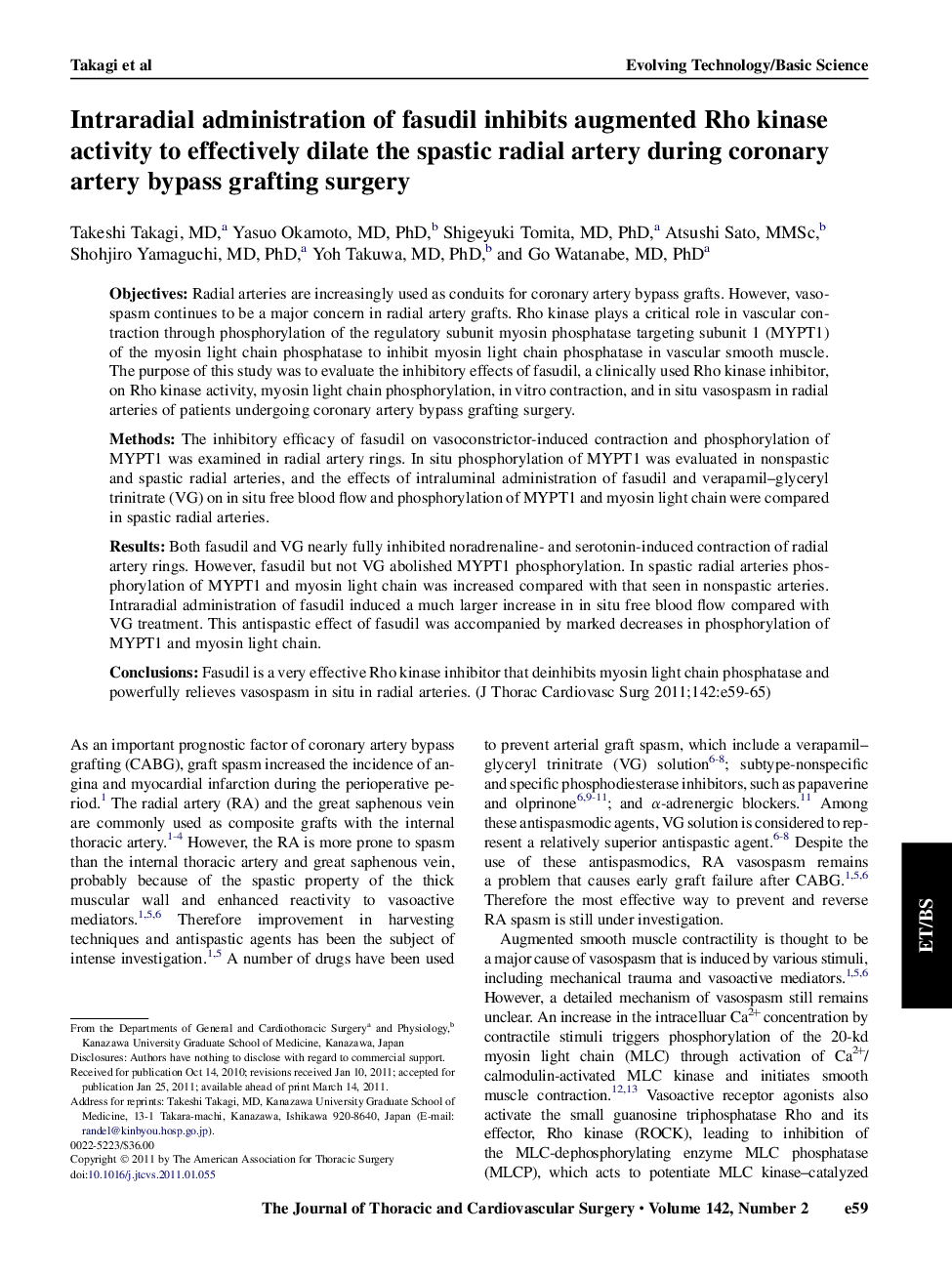| Article ID | Journal | Published Year | Pages | File Type |
|---|---|---|---|---|
| 2982598 | The Journal of Thoracic and Cardiovascular Surgery | 2011 | 7 Pages |
ObjectivesRadial arteries are increasingly used as conduits for coronary artery bypass grafts. However, vasospasm continues to be a major concern in radial artery grafts. Rho kinase plays a critical role in vascular contraction through phosphorylation of the regulatory subunit myosin phosphatase targeting subunit 1 (MYPT1) of the myosin light chain phosphatase to inhibit myosin light chain phosphatase in vascular smooth muscle. The purpose of this study was to evaluate the inhibitory effects of fasudil, a clinically used Rho kinase inhibitor, on Rho kinase activity, myosin light chain phosphorylation, in vitro contraction, and in situ vasospasm in radial arteries of patients undergoing coronary artery bypass grafting surgery.MethodsThe inhibitory efficacy of fasudil on vasoconstrictor-induced contraction and phosphorylation of MYPT1 was examined in radial artery rings. In situ phosphorylation of MYPT1 was evaluated in nonspastic and spastic radial arteries, and the effects of intraluminal administration of fasudil and verapamil–glyceryl trinitrate (VG) on in situ free blood flow and phosphorylation of MYPT1 and myosin light chain were compared in spastic radial arteries.ResultsBoth fasudil and VG nearly fully inhibited noradrenaline- and serotonin-induced contraction of radial artery rings. However, fasudil but not VG abolished MYPT1 phosphorylation. In spastic radial arteries phosphorylation of MYPT1 and myosin light chain was increased compared with that seen in nonspastic arteries. Intraradial administration of fasudil induced a much larger increase in in situ free blood flow compared with VG treatment. This antispastic effect of fasudil was accompanied by marked decreases in phosphorylation of MYPT1 and myosin light chain.ConclusionsFasudil is a very effective Rho kinase inhibitor that deinhibits myosin light chain phosphatase and powerfully relieves vasospasm in situ in radial arteries.
